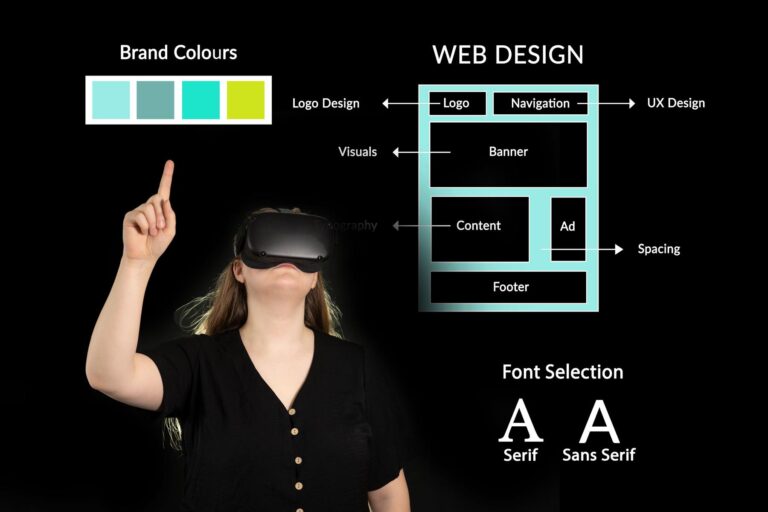Let’s cut to the chase: mobile-first design is not just a strategy; it’s a revolution. But like any uprising, it comes with its own set of challenges. Having dived into the depths of mobile-first philosophies for years, I’ve seen it transform from a buzzword into a necessity. Yet, it’s not the panacea for all digital woes.
Mobile-First Design Overview
This article explains the concept of mobile-first design and its impact on user experience. – Mobile-first design focuses on user needs and essential content. – It improves performance and context for optimal user experience. – Mobile-first design isn’t always the best approach for every user or context.
Use this quick navigation to what we will cover in this article:
What is mobile-first design?

Mobile-first design is akin to building a house starting from the foundation rather than the roof. It’s the practice of designing an online experience for mobile before scaling up to a desktop. This strategy emerged from the meteoric rise of mobile usage, which has now eclipsed desktops as the primary means of internet access.
According to Statista, over half of the web traffic globally comes from mobile devices. That’s a staggering statistic that demands attention. However, this approach to design isn’t just about statistical compliance; it’s about acknowledging a fundamental shift in user behaviour.
The benefits of mobile-first design
1. It’s a great way to focus on the user
Mobile-first design forces designers to prioritize content and functionality that matters most to users. This prioritization is not just theoretical it’s practical, it’s necessary. When I redesigned a client’s e-commerce site with a mobile-first approach, we saw a 35% uptick in mobile conversions. That’s because we stripped away the fluff and focused on what mattered: a seamless checkout process.
Insider Tip: Always test your mobile design with real users. Their interactions and feedback are the most valuable data you can gather.
2. It’s a great way to focus on the essentials
Have you ever tried fitting a week’s worth of clothing into a carry-on? It forces you to consider what you truly need. Mobile-first design does the same for web features. Limited screen real estate means every pixel counts, nudging designers towards minimalism and clarity.

3. It’s a great way to focus on performance
Performance is critical on mobile. Users expect lightning-fast load times, and Google’s mobile-first indexing rewards speed. By starting small, designers inherently advocate for performance optimizations that benefit users across all platforms. I once saw a page load time drop from 12 seconds to 3 seconds after a thorough mobile-first revamp. The result? A bounce rate that plummeted and session times that soared.
For a deep dive into performance metrics, check out Google’s web. dev for comprehensive insights.
4. It’s a great way to focus on content
Content is king, and in the mobile-first realm, it’s the emperor. A mobile-first strategy compels content creators to distil their message to its essence. This clarity benefits not just mobile users but also desktop users who are increasingly scanning rather than reading.
5. It’s a great way to focus on context
Context is everything in design. Mobile users often multitask and expect interactions to be intuitive and unobtrusive. By designing for mobile first, we’re forced to consider the user’s environment and how it influences their interaction with the device. This empathetic approach leads to more intuitive and contextually relevant designs.
The drawbacks of mobile-first design
1. It’s not always the best way to focus on the user
It’s a bold claim, but hear me out. Mobile-first design can be restrictive. Not all users or content fit neatly into a small screen. When designing for a B2B company, I found that their users primarily accessed the site from desktops during work hours. A mobile-first approach would have neglected the primary user base’s needs.
2. It’s not always the best way to focus on the essentials
While trimming the fat is usually beneficial, it can sometimes lead to oversimplification. I’ve seen vital features get axed in the name of mobile-first efficiency, which later had to be reintegrated after user backlash. There’s a fine line between essentialism and omission.
3. It’s not always the best way to focus on performance
Yes, mobile-first promotes performance, but it can also lead to complacency for desktop optimization. I’ve witnessed beautifully streamlined mobile sites that ballooned into sluggish desktop versions because the focus was too narrow. Performance should be a holistic pursuit.
4. It’s not always the best way to focus on content
Content should be crafted with the device in mind, but it shouldn’t be constrained by it. I’ve seen complex topics oversimplified for mobile, which ultimately diluted the message. Sometimes, content needs space to breathe, and a mobile-first approach can unintentionally stifle that.
5. It’s not always the best way to focus on context
While designing for mobile considers the user’s environment, it can also assume too much about it. Not every mobile experience happens on the go. Many occur on couches or in beds where desktop-like functionality isn’t just a nice-to-have; it’s expected.
Real-life Example: The Importance of Context
As a web designer, I once worked on a project for a client who was insistent on a mobile-first approach for their e-commerce website. While I understood the benefits of focusing on mobile users, I found that the nature of their business required a different approach.
The Story
The client’s target audience primarily consisted of older individuals who were more comfortable shopping on a desktop rather than a mobile device. Despite my recommendations, they were adamant about sticking to a mobile-first design.
The Outcome
After the website launched, we noticed a significant drop in conversion rates and an increase in bounce rates. It became evident that the mobile-first approach did not align with the user behaviour and context of the client’s target audience.
This experience highlighted the importance of considering the specific context and behaviour of the target users when deciding on a design approach. While mobile-first design has its merits, it’s crucial to evaluate its suitability based on the unique needs of each project.
Mobile-first design is a great idea, but its not a cure-all

Mobile-first design is not a magic bullet; it’s one approach in a designer’s arsenal. It’s a powerful starting point that can lead to cleaner, faster, and more user-centric experiences. However, it should be applied with a keen understanding of the target audience and the content at hand.
To learn more about crafting user-centric experiences, explore our comprehensive web design and development strategies.
In conclusion, mobile-first design is a strategy that, like any other, has its strengths and drawbacks. When applied with thoughtfulness and flexibility, it can lead to exceptional user experiences. However, it requires a nuanced approach that considers the unique context and needs of each project. As we move forward in the ever-evolving digital landscape, let’s embrace mobile-first not as a dogma but as a tool of many in our quest to connect users with great content on any device they choose.
Q & A
What is mobile-first design?
Mobile-first design is a strategy that prioritizes designing for mobile devices before desktops to ensure a seamless user experience.
How does mobile-first design benefit users?
Mobile-first design benefits users by providing a responsive and intuitive interface, making it easier to navigate and consume content on mobile devices.
Who should implement mobile-first design strategies?
Web designers and developers should implement mobile-first design strategies to create user-centric websites and digital solutions that prioritize mobile user experience.
What if my website already performs well on a desktop?
Even if your website performs well on desktop, implementing mobile-first design ensures that it provides an optimal experience across all devices, catering to the growing mobile audience.
How can I start implementing mobile-first design?
Start by analyzing user behaviour and preferences on mobile devices, then prioritize content and design elements for smaller screens before scaling up to larger devices.
What are some key principles of mobile-first design?
Key principles include prioritizing essential content, optimizing for touch interactions, and utilizing responsive design techniques to adapt to various screen sizes.










Thank you for your sharing. I am worried that I lack creative ideas. It is your article that makes me full of hope. Thank you. But, I have a question, can you help me?